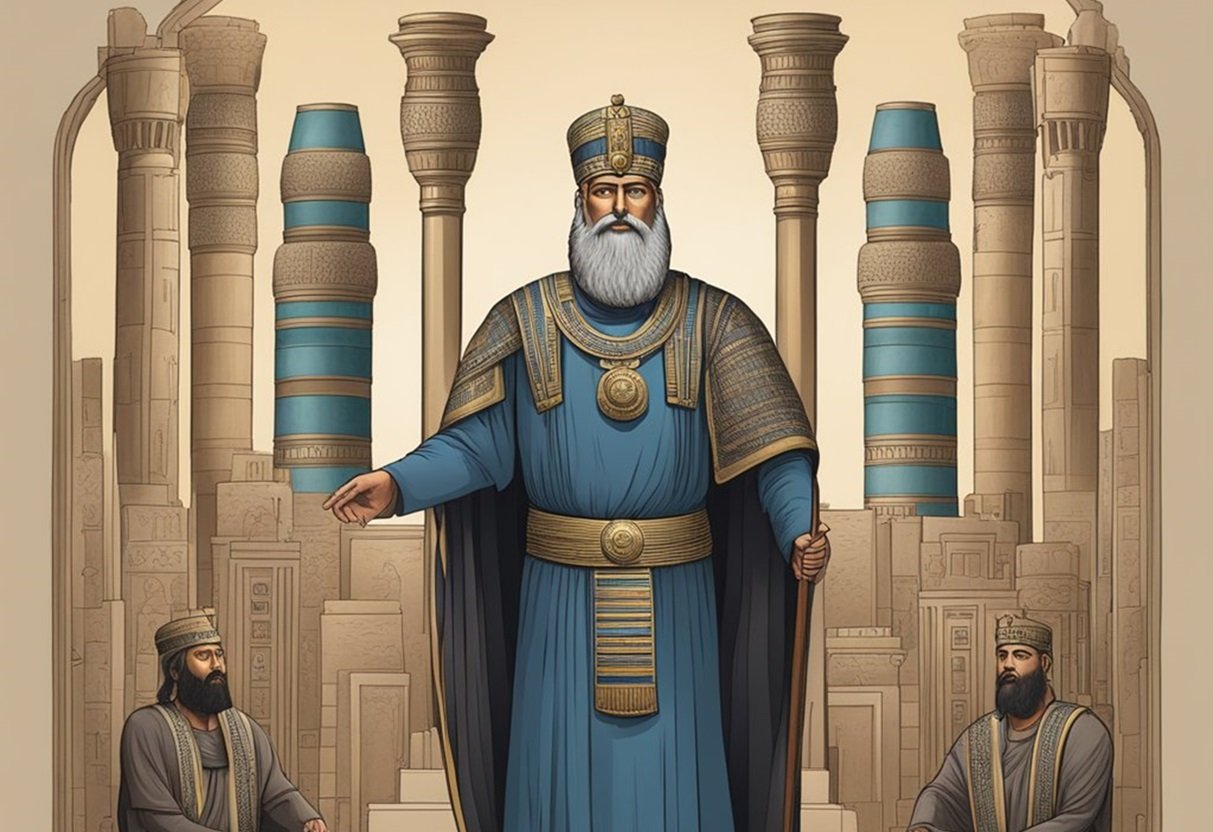Hammurabi, often referred to as Khammurabi, stands out as a monumental figure in the history of ancient Babylon. He reigned from around 1792 to 1750 BCE, during which time he significantly transformed the political landscape of Mesopotamia. Known for his remarkable leadership and strategic conquests, Hammurabi succeeded in uniting various city-states under his rule, ushering in an era of stability and prosperity.

The most notable achievement of Hammurabi’s reign was his creation of the Code of Hammurabi, a comprehensive set of 282 laws that laid the foundation for justice in the ancient world. This legal code, one of the earliest and most complete in history, provided guidelines covering various aspects of daily life, trade, property, and family matters, influencing legal systems for centuries to come.
Beyond his legislative accomplishments, Hammurabi’s military prowess played a crucial role in establishing Babylon as a dominant power. His successful campaigns against rival city-states like Larsa solidified his control over the region, allowing Babylon to flourish as a powerful empire. Learn more about Hammurabi’s impact and legacy through his transformative reign on ancient Mesopotamia.
Hammurabi’s Rise to Power

Hammurabi, also known as Khammurabi, emerged from early life as the son of a king. He ascended the throne under complex circumstances of political intrigue and ancestry. This rise to power marked the beginning of significant achievements.
Early Life and Origins
Hammurabi was born around 1810 BCE in Babylon. He was the son of Sin-Muballit, a prominent king of Babylon. Growing up, Hammurabi was exposed to political and military planning, preparing him for future leadership.
Babylon was not yet the dominant power it became under Hammurabi. It was one of many city-states in Mesopotamia. Despite its minor status, Babylon’s strategic location on the Euphrates River offered potential for growth and influence. As he matured, Hammurabi’s education included administration, law, and military tactics.
This foundational knowledge was crucial for his later successes. He observed his father’s reign, keenly learning the intricacies of governance. Lastly, Hammurabi’s heritage and upbringing instilled in him a strong sense of purpose, setting the stage for the impactful reign that was to come.
Ascension to the Throne
Sin-Muballit, Hammurabi’s father, abdicated the throne due to failing health. This event in 1792 BCE led to Hammurabi’s ascension. The transition was smooth, given the groundwork laid by his father’s stable rule.
Hammurabi inherited a kingdom facing external threats and internal administrative challenges. He quickly took decisive actions to consolidate power. By smartly forging alliances and using diplomatic tactics, he neutralized potential rivals. The early years of his reign were marked by strategic consolidations and reforms.
His actions not only secured his position but also expanded Babylon’s influence over neighboring regions. These early successes were critical in establishing Hammurabi’s authority and set the foundation for Babylon’s emergence as a major power in the ancient world.
Reign and Legacy

Hammurabi, the sixth king of the Amorite dynasty in Babylon, is best known for his code of laws and the expansion of his empire. His rule was marked by strategic diplomacy, significant construction projects, and notable religious contributions.
Code of Hammurabi
Hammurabi is famously known for the Code of Hammurabi, one of the earliest and most complete written legal codes. This code, consisting of 282 laws, addressed topics like property rights, contracts, and family law. It established standards for justice with specific punishments tailored to various offenses.
The laws were publicly displayed on a stele, ensuring transparency and accessibility. This code influenced later legal systems, including Mosaic Law. Hammurabi’s emphasis on justice and social order solidified his reputation as a fair and effective ruler.
Expansion and Diplomacy
Hammurabi’s reign saw significant territorial expansion through military conquests and strategic alliances. He initially focused on consolidating power within Babylon before extending control over neighboring city-states like Larsa, Mari, and Eshnunna. His conquests weren’t just for land; they also aimed to control vital trade routes and resources.
Diplomacy played a crucial role in Hammurabi’s success. He forged alliances through marriages and treaties. These alliances helped maintain stability and deterred rebellion, cementing his dominance over Mesopotamia and showcasing his tactical acumen.
Construction and Public Works
Hammurabi invested heavily in construction and public works, enhancing the infrastructure of Babylon. He built temples, palaces, and walls that strengthened the city’s defenses and showcased its grandeur. One of his notable achievements was the improvement of the city’s irrigation system, crucial in a region reliant on agriculture.
The canals and water management systems he developed increased agricultural productivity and supported the growing population. His focus on public works improved living standards and demonstrated his commitment to the prosperity of his people.
Religious and Cultural Contributions
Religion played a central role during Hammurabi’s reign. He promoted the worship of Marduk, Babylon’s chief deity, elevating the city’s religious status. He sponsored the construction of temples dedicated to various gods, reflecting the importance of religion in everyday life.
Culturally, Hammurabi’s rule marked a flourishing period for Babylon. The city became a hub for art, literature, and science. His patronage of scribes and scholars led to the production of numerous texts, contributing to the region’s rich cultural legacy and preserving knowledge for future generations.

